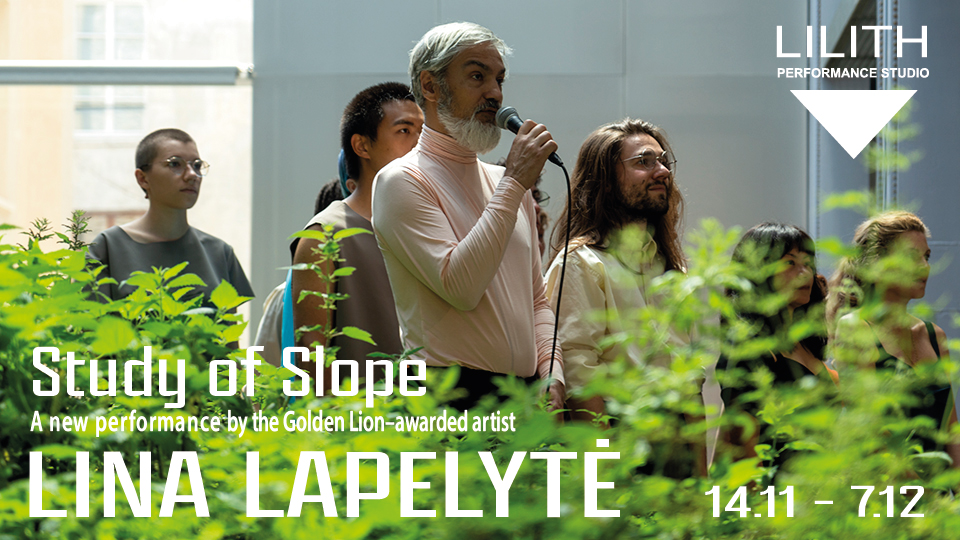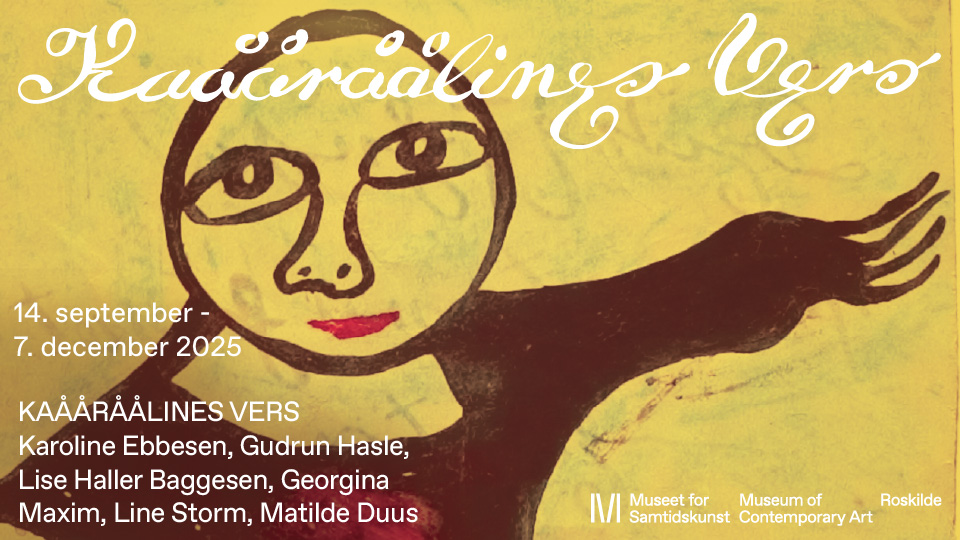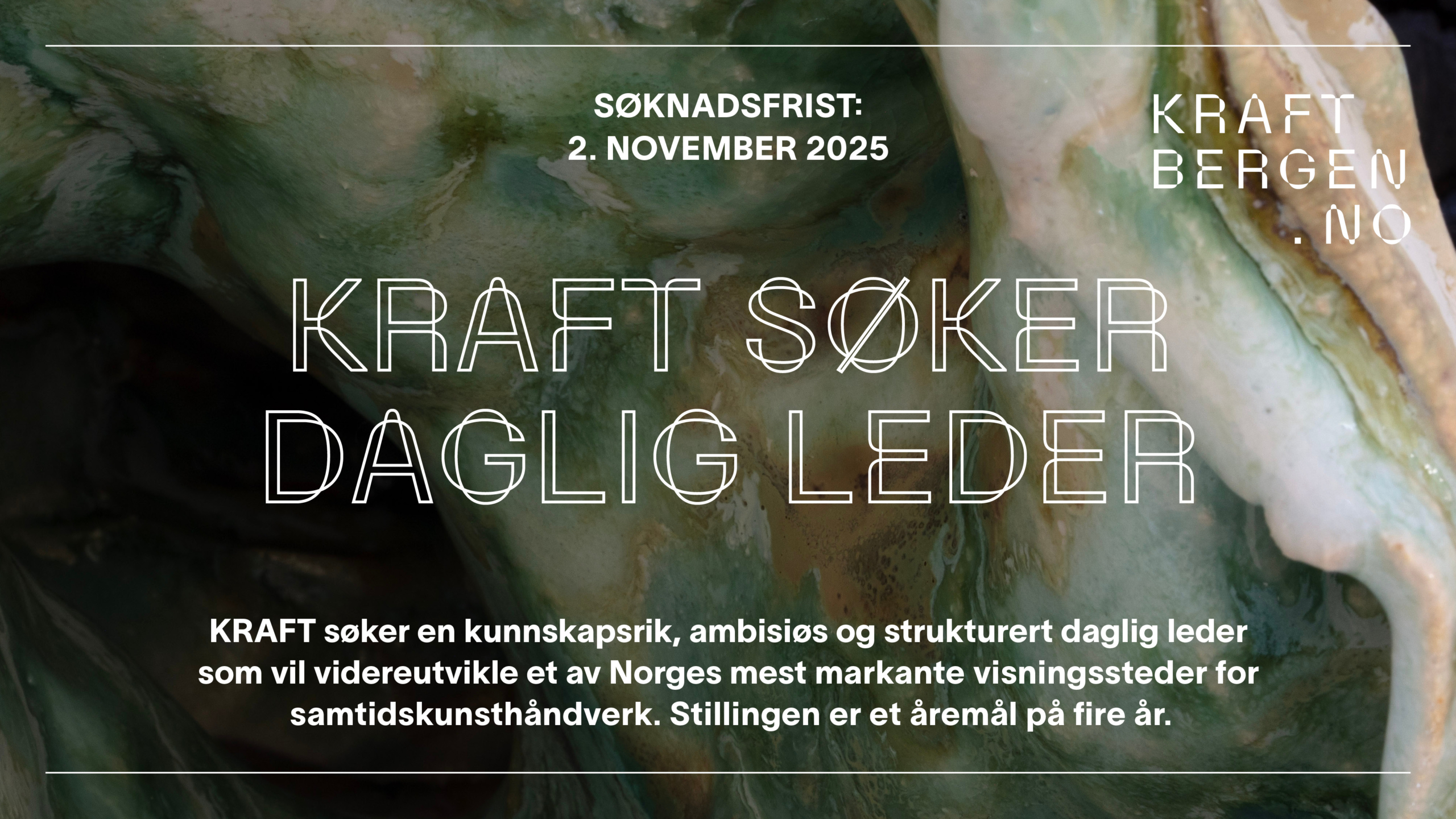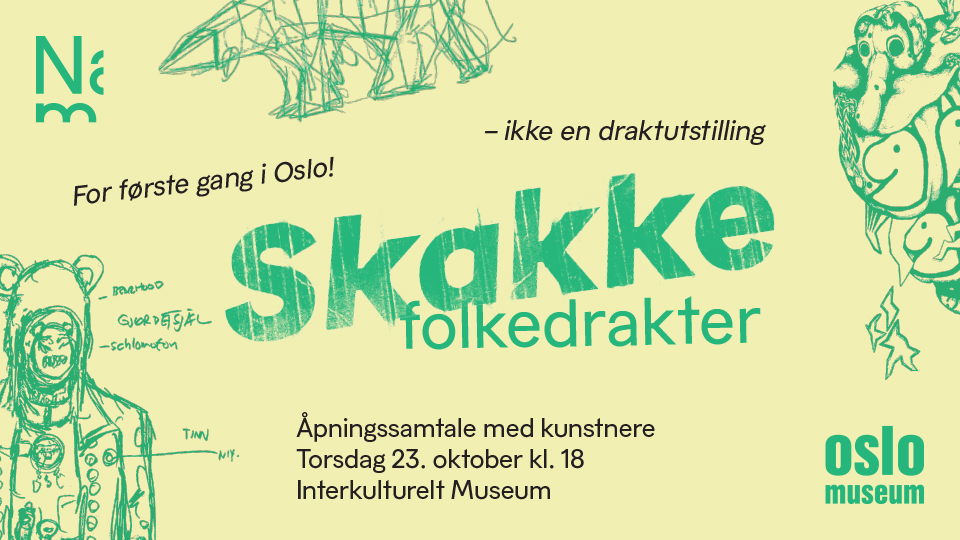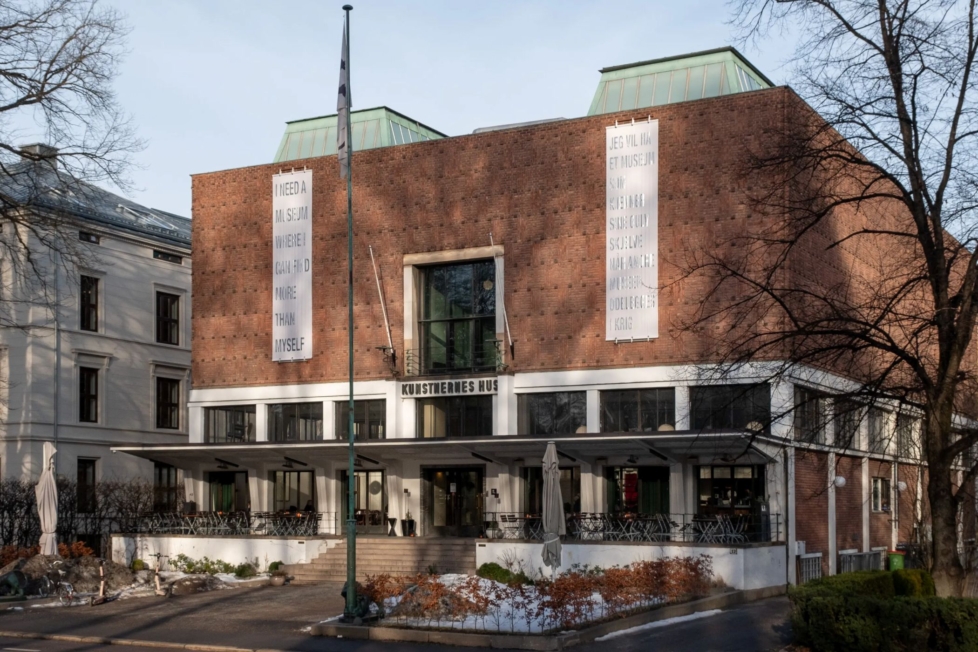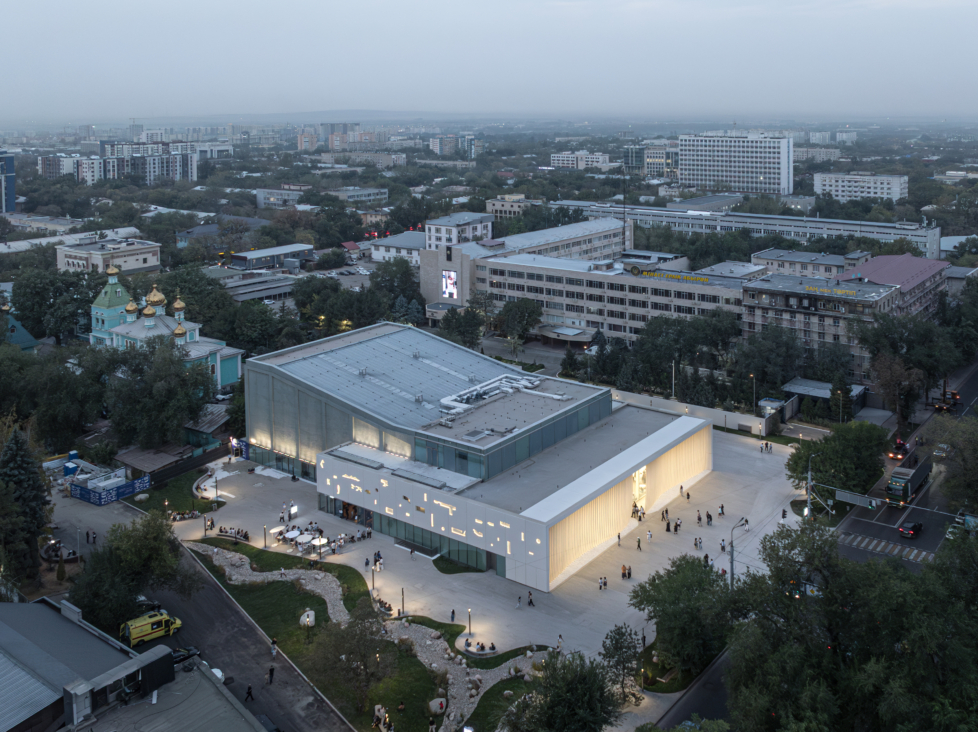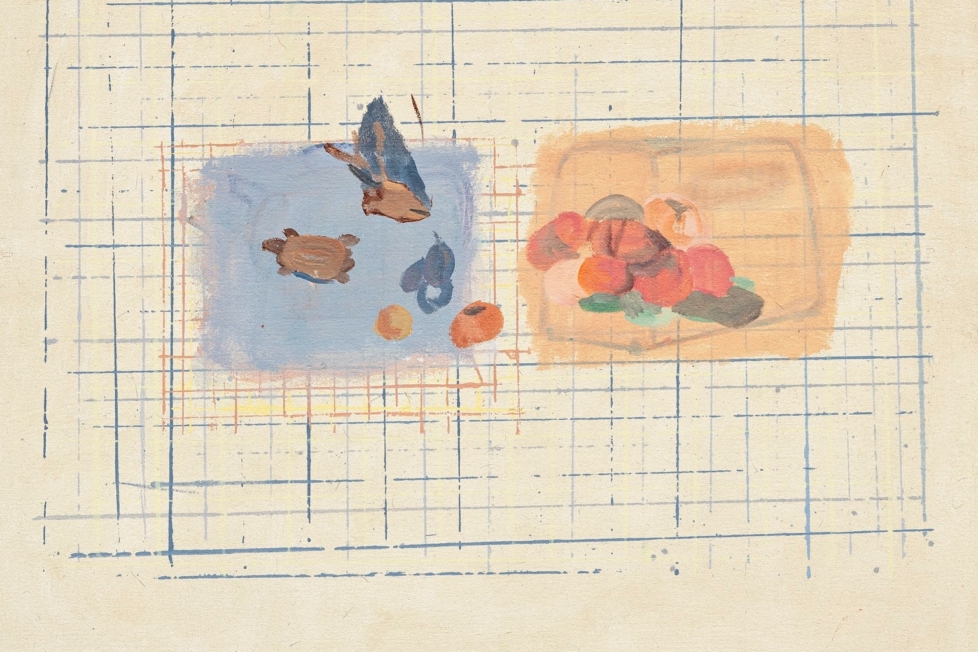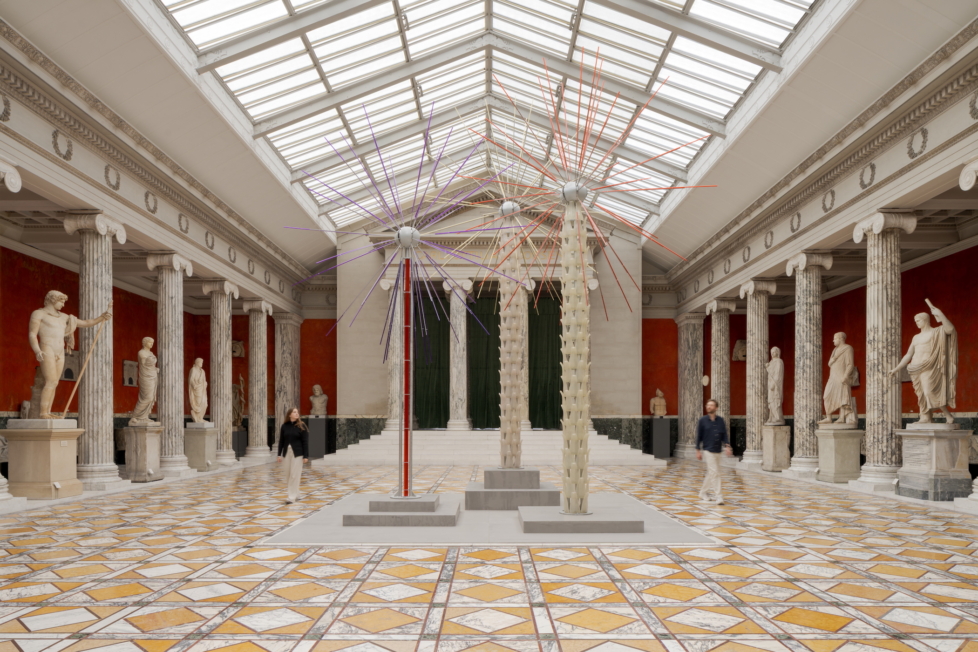
Once upon a time – in a land far, far away – a Black Creole witch named Mary Magdalene gave birth to a little intersex superbaby. The baby had not yet taken its name from renowned Marxist thinker and activist Angela Davis. As the youngest of five strong daughters, she grew up in a separatist community full of mothers and dykes. For a long time, men appear to have been a non-issue. The fact that her primary school was co-opted by Black Panthers in the late 60s is but one of many incredible interludes in the life story of the true true freak that is Vaginal Davis.
As Davis’s work from the past forty years is now being summarised, it takes the form of a veritable invasion of Stockholm’s art scene. Six of the city’s major institutions are involved in the sprawling retrospective, four currently and an additional two in the autumn. I thank my stars for this insanity! Surely now the times have caught on and this giant will finally get her due? These days, Davis’s most popular quote – “too gay for the punk scene and too punk for the gay scene” – might be found adorning a coffee mug in the nearest museum boutique. Icon? Yes, that’s what they say.

The main show Magnificent Product is on view at Moderna Museet and offers a solid introduction in which archival materials and all manner of memorabilia cover an enormous wall, providing insight into the various contexts of Davis’s work during the course of her career. They call it family. Young versions of queer legends such as Ron Athey, Justin Vivan Bond, and Kembra Pfahler flash by. There are quite a few cocks and feet being sucked. Yum yum.
The first room also houses The Carla DuPlantier Cinerama Dome, a cinema in which a selection of Davis’s early video pieces are being shown. Including the iconic cult film That Fertile Feeling (1983), in which Davis – wearing a shabby blonde wig and fur coat – delivers eleven babies from out of the womb of Fertile La Toyah Jackson at the home of a half-naked twink aptly named “New Husband.” It makes you howl with joy. Neither Ryan Trecartin nor the sketches in RuPaul’s Drag Race would have existed without this raw primordial matter.
However, Davis’s iconic guerrilla aesthetic is alarmingly easy to digest. Her seminal overdramatic shifts in tempo and montage experiments are rendered somewhat slippery within the confines of Moderna Museet. Pieces such as ¡Cholita!(1995) or The White to Be Angry (1999) don’t hit home, despite their politically contentious themes. The museum setting strips away the films’ original subversive edges and renders them a harmless indulgence reminiscing on the past. Personally, I would have preferred to be sucked off by Davis in real life at Club Sucker – not see others being fondled by her in the work The Last Club Sucker (1999)!
Perhaps this is due to the fact that Stockholm looks so clean and pretty, at least on the surface. There is no sordid historical baggage for Davis to connect to, which means that her work is almost inevitably placed on a high, unassailable pedestal.

The pink-soaked installation The Wicked Pavilion delves deeper into queer nostalgia. Davis’s strategy is often to engage in a humorously over-the-top dialogue with history, filtering existing people and ideas through her eclectic linguistic apparatus and bringing them to the surface. She poisons her material, in the most positive sense of the word. In a long series of paintings, done with makeup on found paper, she portrays legendary women whose names are sometimes distorted (“Elfrieda Jelinek”, “Audre Lorde”, “Unica Zürn-Hextentexte”).
The naïveté of these fragile portraits illustrates the vital role of immediacy in Davis’s work. Everything is done fast and is drenched in references. At the nearby National Museum, portraits made in the same technique are hung, salon style, in one of the collection spaces. The variety displayed in these brittle motifs is contrasted in their being placed on a heavenly firmament provided by a turquoise blue wall, creating a vibrating current of flow blending Davis’s interiority with centuries of art history.

In the pink-infused installations The Fantasia Library and “the bedroom,” which both comprise sections of The Wicked Pavilion, letters, books, collages, newspaper clippings, and objects are presented in a luxurious showcase as part of a girly bedroom where a gigantic brown cock lies slumbering in the bed. This corresponds, in a not altogether obvious way, to an imaginary library that includes fictitious titles authored by Davis such as Sweet Chili, The Porked Schlong, and The Fiscal Clit.
Despite the fact that Davis tends to emphasise praxis and actual work, the display’s preoccupation with visualising history and language occasionally reduces the installation to didactic examples. In this case, we are supposed to comprehend the value of things and what place they hold in Davis’s universe. But does this fairytale castle produce something in its own right, something truly new and transformative in the present? It seems more akin to a form of testimony.

HOFPFISTEREI at the small-scale institution Index draws upon Davis’s textual production. Through fanzines, printed matter, and letters, it is possible to approach the artist’s reference-heavy world in a more accessible way. The handwritten letters are hysterical to read (when she pretends to be the artist Vanessa Beecroft, for instance) as are the legendary fanzines she produced in the 80s and 90s. In this exhibition, Davis’s body feels more present than it does in the heavy halls of Moderna Museet.
Of course, most of what is shown at Index is about sex, nonsense, and incoherent babble. It becomes clear that Davis’s forte is her work with language, resulting in a radical semantics that reshape life through words. Deep down in the video-based news magazine Fertile La Toyah Jackson Video Magazine (1992–1993) there is an artistic force so compelling that it makes the concept of camp feel insufficient. As a visitor, one is at jeopardy of being fundamentally reshaped by Davis’s megalomania.

The exhibitions at Moderna Museet, the National Museum, and Index all form part of the same visionary universe. By contrast, in Choose Mutation at Accelerator Davis’s role is toned down in favour of the Berlin-based performance collective CHEAP, of which she has been a member since 2001. The hard to penetrate hour-long video is difficult to take in after visiting the other three venues on the same day. This cinematographically advanced collage demands its own time (and review). However, seeing Davis’s sweet ass in one of the giant black and white photographs is a wonderful treat, indeed. Her smile sparkles. Equally delightful is the photograph showing her dressed as a man – is that her private self peeking through? No one knows.
In a recent interview with fashion designer Rick Owens published in Artforum, the 63-year-old Davis is candid about her views on her own sexuality: “I grew up in an all-feminine household with only sisters. There weren’t any men in our world at all, and my mother was a lesbian, so I have this thing where I’m sexually attracted to men, but I don’t really like them. I have very few close male friends. […] I don’t have many male friends because I don’t really understand the male world.”
In what sounds like a blunt statement, Davis’s (true?) desires appear as a tragic paradox casting her artistic strategies in a new light. Is the abundance of masks and avant-garde strategies above all a way to reach other people – to create a space where she is accepted for who she is – and ultimately find love? Is she, in fact, an über intelligent Disney princess?

Translated from Swedish by Samuel Teeland.




